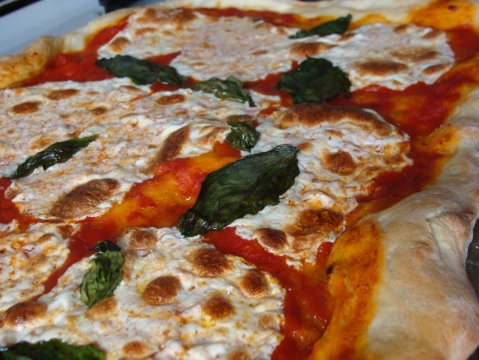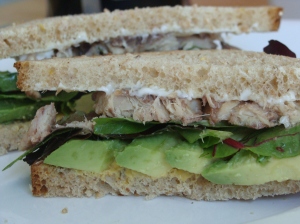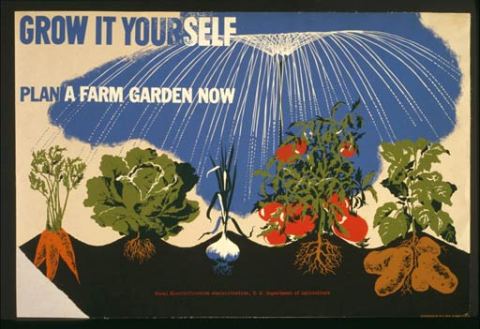Find a Farmer, Fast!
March 25, 2009
It’s the one April deadline that doesn’t elicit panic…your Community Supported Agriculture (CSA) sign-up! Most farmers will hold informational sessions around this time, so click the link below to locate the nearest CSA by zipcode.
For those of you unfamiliar with CSAs, I’ve included a thorough description below, from http://www.localharvest.org: CSA is a partnership of mutual commitment between a farm and a community of supporters which provides a direct link between the production and consumption of food. Supporters cover a farm’s yearly operating budget by purchasing a share of the season’s harvest. CSA members make a commitment to support the farm throughout the season, and assume the costs, risks and bounty of growing food along with the farmer or grower. Members help pay for seeds, fertilizer, water, equipment maintenance, labor, etc. In return, the farm provides, to the best of its ability, a healthy supply of seasonal fresh produce throughout the growing season. Becoming a member creates a responsible relationship between people and the food they eat, the land on which it is grown and those who grow it.
Joining a CSA makes sense economically, ecologically and nutritionally:
- CSA keeps food dollars in the local community and contributes to the maintenance and establishment of regional food production.
- With a “guaranteed market” for their produce, farmers can invest their time in doing the best job they can rather than looking for buyers.
- CSA supports the biodiversity of a given area and the diversity of agriculture through the preservation of small farms producing a wide variety of crops.
- CSA creates a sense of social responsibility and stewardship of local land.
- CSA puts “the farmers face on food” and increases understanding of how, where, and by whom our food is grown.
- CSA delivers locally-grown food shortly after it is harvested so there is less nutrient loss than when food travels long distances. Also naturally-ripened food tastes delicious.
FYI: Most farm shares run about 24 weeks, from late spring to late fall, with a weekly pick-up of fresh (sometimes organic, always local) produce. Some CSAs source other food items from neighboring farms, such as milk, cheese, yogurt, eggs and honey. As members of the Washington Square CSA last season, our farmer hailed from upstate NY, so maple syrup was an additional goodie on the list. As soon-to-be-members of our local Brooklyn CSA, we will be carrying home organic flower bouquets in addition to vegetables, fruit and eggs.
Saturday Pie
March 16, 2009
 What do you do with a half ball of fresh Mozz in the fridge drawer come the weekend? You fashion a nice Margherita pizza pie, of course!
What do you do with a half ball of fresh Mozz in the fridge drawer come the weekend? You fashion a nice Margherita pizza pie, of course!
Saturday morning I woke up, fed the yeast, and knocked out a dough by the time my coffee brewed (see, you all can do this, even without coffee).
I left the dough to rise while Matt and I took a long walk through Greenwood Cemetery–beautiful, quiet and vast, an amazing spot to wander in Brooklyn. We came home to find the dough had about tripled in size and was ready for a little nimble finger action.
I sprinkled the backside of a sheet pan with flour and worked the pliable dough into a rectangular-ish shape (with hopes of sliding the pizza off the pan and onto our pizza stone in the oven…no such luck, too big and too thin). So, I simply baked it on the back of the sheet pan and in 15 minutes was enveloped by the heady aroma of yeast bread and sat down to a bubbly pie and economy-approved lunch. Add the ice-cold Brooklyn Lager and it’s just about as perfect as a Saturday can get!
Pizza Dough
makes 2 pies, serves 4
- 1 pack active dry yeast
- 3/4 cup warm water (110 degrees)
- 1 Tbsp extra virgin olive oil
- 2 cups all-purpose flour, plus more for kneading
- 1 tsp kosher or sea salt
- Cornmeal for dusting (optional)
- Tomato sauce (arrabbiata lends some nice heat-but use what you like)
- 8 oz fresh mozzarella, sliced thin into 9 pieces
- handful fresh basil leaves
- Proof the yeast for 10 minutes until nice and foamy (add 1 tsp sugar at beginning if desired). Stir in the olive oil.
- In a food processor bowl, combine flour and salt. Turn on and drizzle in the water-yeast mix through the feed hole until a ball of dough just forms. Stop machine, gather dough, and place on a floured work surface. Knead dough several minutes–try not to add too much flour, a little stickiness is okay.
- Place dough in a large oiled bowl and coat all sides of the dough with the oil. Cover with plastic wrap and place in a warm spot to rise until doubled or tripled, 1-2 hours (up to four hours).
- Preheat oven to 500 degrees. Divide dough in half; form into your preferred pie shape with hands or a rolling pin (you can freeze the other half for later). Transfer to a cornmeal or flour-dusted baking sheet. (If transferring from a pizza board to a hot stone, use cornmeal). Add sauce and cheese and bake until crust is crisp and lightly browned, about 15 minutes. Add basil about 5 minutes before finished.
My Latest Kitchen Accessory: The Sardine
March 8, 2009
 I fell for the sardine in culinary school where I had my first taste, grilled fresh and whole. Wow, that was a sardine?
I fell for the sardine in culinary school where I had my first taste, grilled fresh and whole. Wow, that was a sardine?
The little guy had a brief cameo in this season’s Top Chef, when cheftestants were challenged to produce perfectly butterflied fillets. In the time it took them to butcher 3 inches of flesh, you could create an entire sardine snack (see sandwich below).
Although fresh sardines are impressive, when available, popping the top of a sardine tin–no fancy fish knife required–reveals 8 perfectly aligned fillets ready to be eaten or gussied up for dinner. While you might not find the bristly fillets so physically attractive (try the manicured skinless, boneless varieties), the amount of omega-3 fatty acids, protein, calcium and iron might entice.
I was looking for a low-mercury fish that was tasty, convenient and cheap, and these fit the bill. Since sardines are very low in mercury, you can eat them without keeping tally of your monthly allotment (this just sounds stressful, and nobody wants to be struck with the Jeremy Pivens). And great news if you are pregnant, you can eat two (6 ounce) servings of sardines per week and safely supply baby’s brain with food-sourced DHAs.
In one 3.75 oz tin of sardines (1 serving), you get 2 grams of omega-3 fatty acids. These fats are known to have anti-inflammatory effects, and there is strong evidence that they help prevent Coronary Heart Disease. The American Heart Association recommends eating 2 servings of low-mercury fatty fish per week for prevention, and 2-4 g of omega-3s per day for those with high cholesterol and triglycerides. As always, getting your omega-3s and other vitamins and minerals from food is preferred to pill form.

My recent creations (photographed here) were a simple lunch and dinner. I needed a filling sandwich to get me through 5 hours of cooking, so I packed whole grain bread with 4 fish fillets, avocado, baby greens, red onions and a little mayo and mustard. Also nice with the sardines would be pickled carrots, cucumber, tomatoes, hard-boiled egg, bean spread or an olive tapenade.
The salad is a Nicoise, Mediterranean-style, and substitutes sardines for tuna. I made a bulgar tabbouleh with chickpeas and lemon vinaigrette, spooned it on top of greens and added hard boiled egg, grape tomatoes and sardine fillets. Please comment with any of your own sardine creations!
sardine fillets. Please comment with any of your own sardine creations!
 Obamas to Plant White House Vegetable Garden
Obamas to Plant White House Vegetable Garden  Have a preference for naturally curly or Russian reds? Then one particular green, kale, is seriously vying for your attention. You’ll need to peel its leaves and chop its stems, but in return it will pack more nutrients than the competition.
Have a preference for naturally curly or Russian reds? Then one particular green, kale, is seriously vying for your attention. You’ll need to peel its leaves and chop its stems, but in return it will pack more nutrients than the competition.